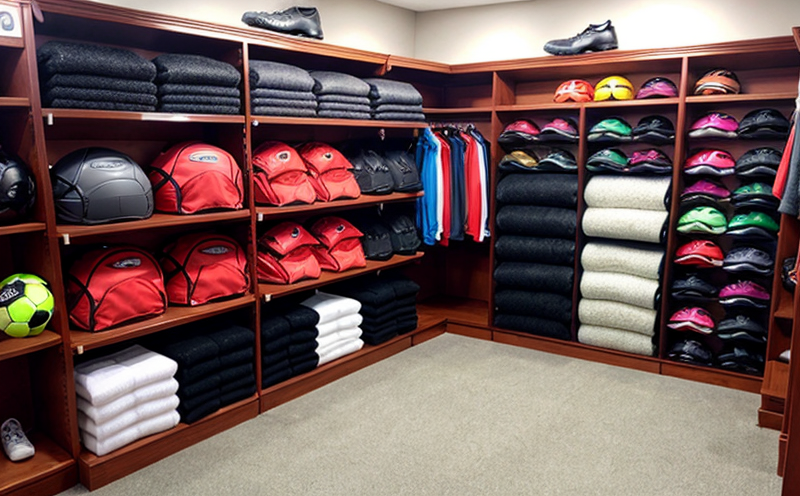Sporting goods inspection
The inspection of sporting goods is a critical process that ensures consumer safety and compliance with international standards. Quality managers and procurement officers rely on accurate inspections to maintain brand reputation, ensure product integrity, and meet regulatory requirements. This service involves the detailed examination of various components within sports equipment such as footwear, apparel, balls, and protective gear.
The inspection process begins with a thorough review of design specifications provided by manufacturers. Compliance officers must verify that these designs align with relevant international standards like ISO 9001 for quality management systems and ASTM D4236 for footwear specifications. This ensures that the product is not only safe but also meets performance expectations.
Sampling methodologies play a crucial role in ensuring representative testing. R&D engineers often work closely with inspectors to determine appropriate sample sizes based on batch size and complexity of the component being inspected. For instance, when inspecting bulk orders of soccer balls, it might be necessary to test every 10th unit from each production line for consistent quality control.
Preparation steps vary depending on the type of sporting good but generally include cleaning surfaces free from dirt or debris, which can interfere with accurate measurements. Once prepared, samples undergo visual inspection using high-resolution cameras and microscopes to detect any visible defects such as tears, discolorations, or irregularities in shape.
For more complex inspections, specialized equipment may be required. For example, biomechanical analysis of athletic footwear requires advanced motion capture technology capable of recording gait patterns under various conditions. Similarly, protective gear like helmets need to undergo impact resistance tests using machines designed specifically for this purpose.
The results from these inspections are then compiled into detailed reports that provide actionable insights for improvements or adjustments needed before mass production can begin. These reports serve as essential documents not only for internal use but also when dealing with regulatory bodies who enforce strict guidelines on safety measures within the industry.
Applied Standards
| Standard | Description |
|---|---|
| ASTM F1459-18 | Specification for protective headgear used in baseball and softball. |
| ISO 20763:2016(E) | Standard for technical requirements of protective footwear used by athletes engaged in contact sports. |
| EN ISO 9459-1:2014(E) | European standard specifying the performance requirements and test methods for safety boots worn by workers exposed to various hazards. |
| ISO/TS 16786 | Taxonomy of sports equipment, including footwear, apparel, balls, etc., along with their respective classification criteria. |
Scope and Methodology
The scope of sporting goods inspection encompasses multiple stages aimed at ensuring both safety and performance. It includes visual inspections conducted by trained personnel equipped with state-of-the-art tools, followed by more rigorous mechanical tests performed on specialized equipment. Visual inspections involve checking for any visible damage or discrepancies in coloration that could indicate potential issues during use.
Mechanical testing covers a wide range of physical properties such as tensile strength, durability, and flexibility depending on the specific product being inspected. For instance, testing tennis rackets involves assessing their ability to withstand repeated strikes without breaking while maintaining optimal performance levels throughout their lifecycle.
After completing all necessary tests, results are analyzed meticulously to identify any deviations from specified tolerances outlined in applicable standards. Any non-conformities discovered during inspection processes must be documented thoroughly and communicated promptly back to the manufacturer for corrective action if required.
Use Cases and Application Examples
- Ensuring compliance with ISO 9001 when developing new lines of athletic footwear.
- Verifying that all components of a protective helmet meet requirements set forth by ASTM F1459-18.
- Evaluating the durability and flexibility characteristics of cycling gloves against EN ISO 9459-1:2014 standards.
- Checking the elasticity and tear resistance properties of synthetic turf used in football fields according to ISO/TS 16786 guidelines.





